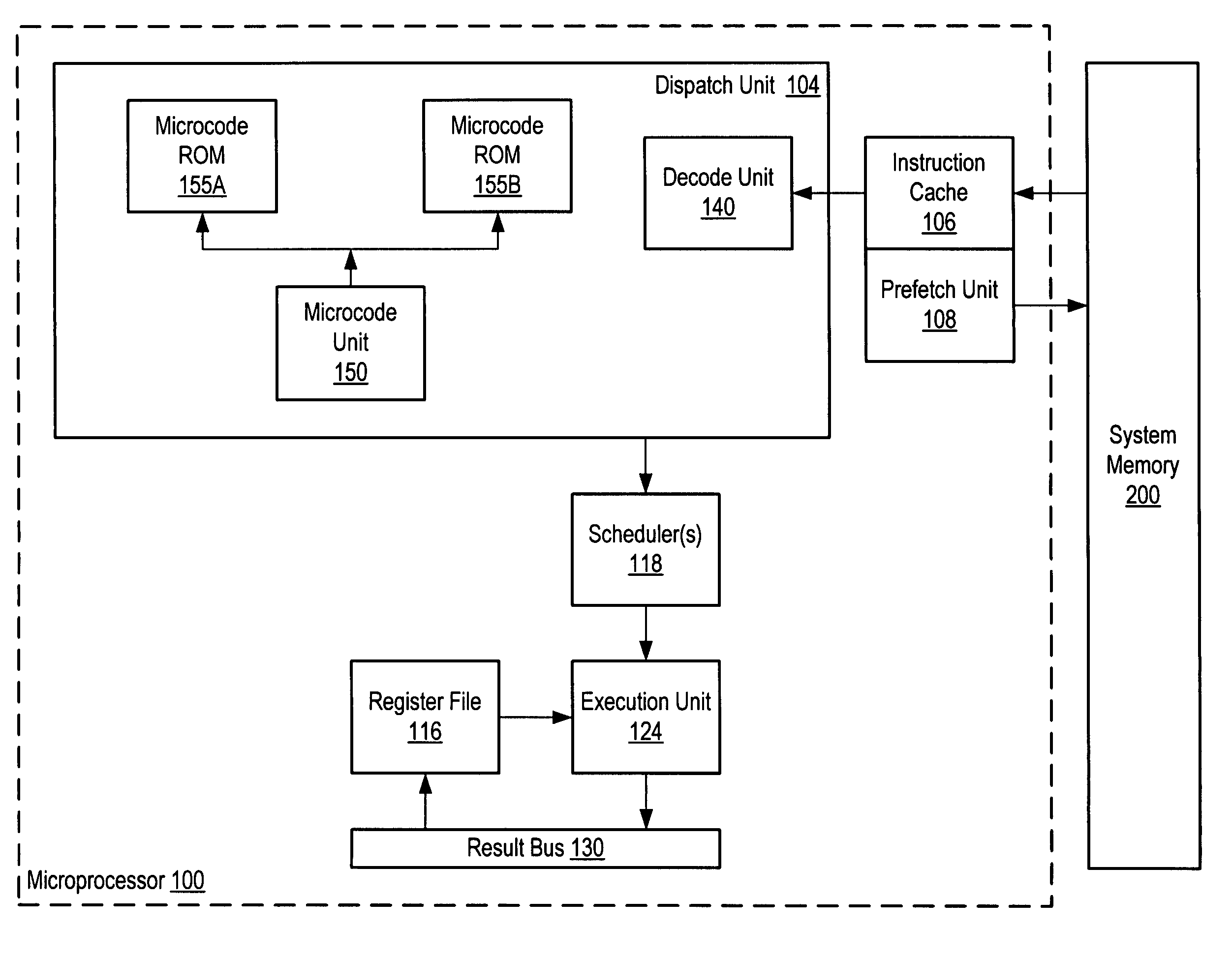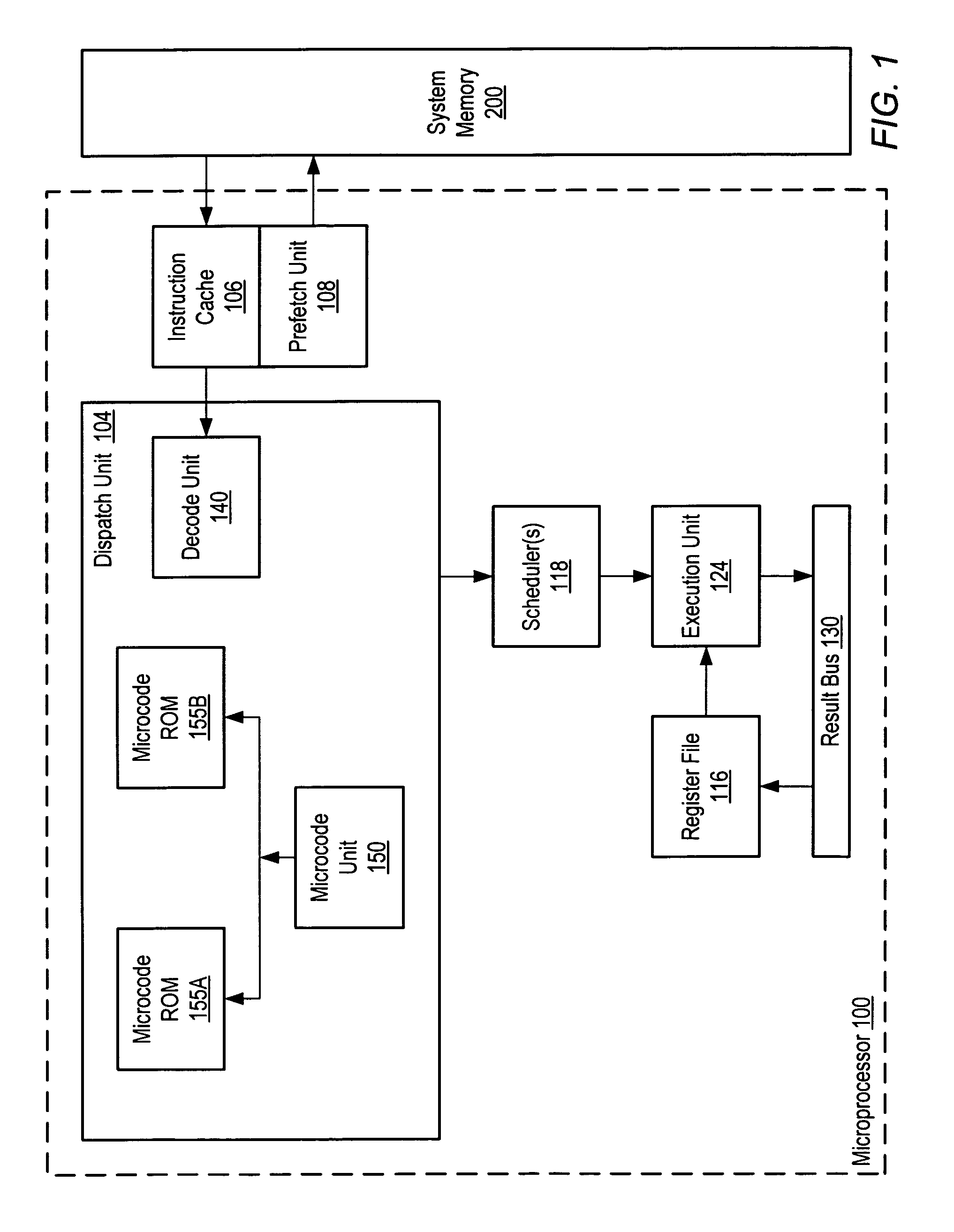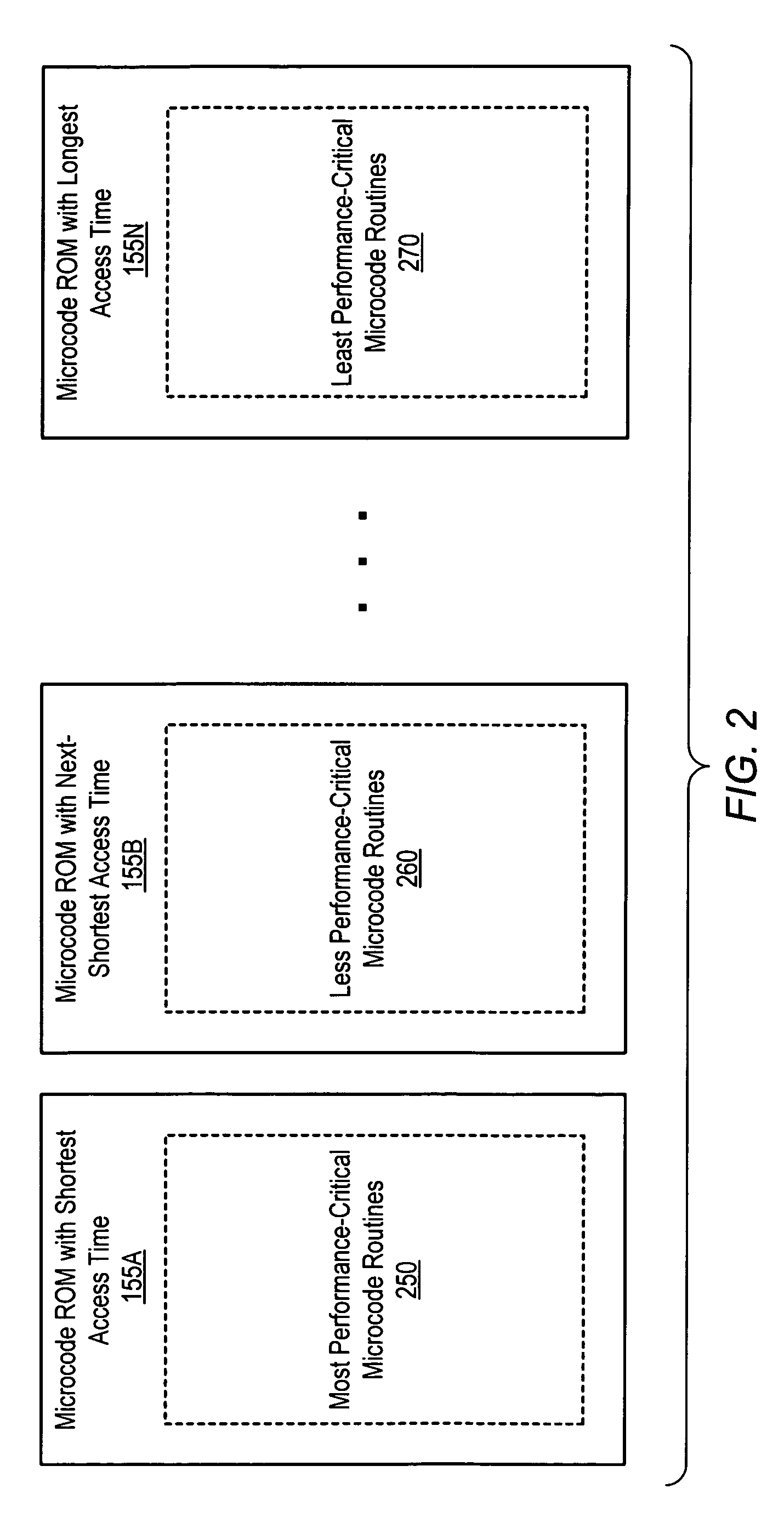Integrated circuit with multiple microcode ROMs
- Summary
- Abstract
- Description
- Claims
- Application Information
AI Technical Summary
Benefits of technology
Problems solved by technology
Method used
Image
Examples
Embodiment Construction
[0026]FIG. 1 is a block diagram of logical components included in a microprocessor 100, according to one embodiment. Microprocessor 100 may be implemented as a single integrated circuit. Microprocessor 100 may include a microcode unit 150 and multiple independently accessible microcode ROMs 155. Microprocessor 100 is configured to execute instructions stored in a system memory 200. In some embodiments, the microprocessor 100 may be designed to be compatible with the x86 architecture. Note that microprocessor 100 may also include and / or be coupled to many other components in addition to those shown here. Additionally, the interconnections between logical components may vary between embodiments.
[0027]Microprocessor 100 may include an instruction cache 106. Microprocessor 100 may include a prefetch unit 108 coupled to the system memory 200. Prefetch unit 108 may prefetch instruction code from the system memory 200 for storage within instruction cache 106. In one embodiment, prefetch un...
PUM
 Login to View More
Login to View More Abstract
Description
Claims
Application Information
 Login to View More
Login to View More - R&D
- Intellectual Property
- Life Sciences
- Materials
- Tech Scout
- Unparalleled Data Quality
- Higher Quality Content
- 60% Fewer Hallucinations
Browse by: Latest US Patents, China's latest patents, Technical Efficacy Thesaurus, Application Domain, Technology Topic, Popular Technical Reports.
© 2025 PatSnap. All rights reserved.Legal|Privacy policy|Modern Slavery Act Transparency Statement|Sitemap|About US| Contact US: help@patsnap.com



